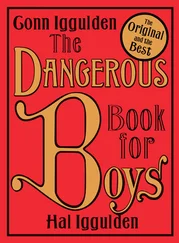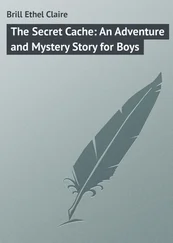Robert Robert - Scouting for Boys
Здесь есть возможность читать онлайн «Robert Robert - Scouting for Boys» весь текст электронной книги совершенно бесплатно (целиком полную версию без сокращений). В некоторых случаях можно слушать аудио, скачать через торрент в формате fb2 и присутствует краткое содержание. Жанр: Старинная литература, und. Описание произведения, (предисловие) а так же отзывы посетителей доступны на портале библиотеки ЛибКат.
- Название:Scouting for Boys
- Автор:
- Жанр:
- Год:неизвестен
- ISBN:нет данных
- Рейтинг книги:3 / 5. Голосов: 1
-
Избранное:Добавить в избранное
- Отзывы:
-
Ваша оценка:
- 60
- 1
- 2
- 3
- 4
- 5
Scouting for Boys: краткое содержание, описание и аннотация
Предлагаем к чтению аннотацию, описание, краткое содержание или предисловие (зависит от того, что написал сам автор книги «Scouting for Boys»). Если вы не нашли необходимую информацию о книге — напишите в комментариях, мы постараемся отыскать её.
Scouting for Boys — читать онлайн бесплатно полную книгу (весь текст) целиком
Ниже представлен текст книги, разбитый по страницам. Система сохранения места последней прочитанной страницы, позволяет с удобством читать онлайн бесплатно книгу «Scouting for Boys», без необходимости каждый раз заново искать на чём Вы остановились. Поставьте закладку, и сможете в любой момент перейти на страницу, на которой закончили чтение.
Интервал:
Закладка:
Using Disguise
The Red Indian scouts, when they wanted to reconnoitre an enemy’s camp, used to tie a wolf’s skin on their backs and walk on all fours, and prowl round the camps at night, imitating the howl of a wolf. Also, when peeping over a ridge or any place where their head might be seen against the sky-line, they put on a cap made of wolf’s-head skin with ears on it so that they might be mistaken for a wolf, if seen.
In Australia, the natives stalk emus—great birds something like an ostrich—by putting an emu’s skin over themselves, and
walking with body bent and one hand held up to represent the bird’s head and neck.
Scouts, when looking out among grass, often tie a string or a band round their head, and stick grass in it, some upright, some
drooping over their face, so that their head is invisible.

A native of Australia stalking emus, with an emu skin over him. He carries a boomerang in his hand and a spear between his toes.
When hiding behind a big stone or mound, they don’t look over the top, but round the side of it.
PATROL PRACTICES IN STALKING
Demonstrate the value of adapting colour of clothes to background by sending out one boy about 500 yards to stand against different backgrounds in turn, till he gets one similar to his own clothes. The rest of the Patrol will watch and notice how invisible the boy becomes when he gets a suitable background. A boy in a grey suit, for example, standing in front of dark bushes is quite visible, but he becomes less so if he stands in front of a grey rock or house. A boy in a dark suit is very visible in a green field, but not when he stands in an open doorway against dark interior shadow.
Demonstrate the effect of movement. Place Scouts in fair concealment (shrubs, etc.), and show how difficult it is to spot them until they move.
Practise quick rushes from cover to cover; crawling along ditches and behind ridges, and from bush to bush.
Try stalking in the dusk. Some of the games given could be played in twilight or in darkness. Do not begin with absolutely black night.
GAMES IN STALKING
Scout Hunting
One Scout is given time to go out and hide himself, the remainder then start to find him. He wins if he is not found, or if he can get back to the starting-point within a given time without being touched.
Message Running
A Scout is told to bring a note to a certain spot or house from a distance within a given time. Other “hostile” Scouts are told to prevent any message getting to this place, and to hide themselves at different points to stop the dispatch carrier getting in with it.
To count as a capture, two Scouts must touch the message runner before he reaches the spot for delivering the message.
Deer Stalking
Patrol Leader acts as a deer—not hiding, but standing, moving a little now and then if he likes. Scouts go out to find him and each in his own way tries to get up to him unseen. The moment the Patrol Leader sees a Scout he directs him to stand up as having failed. After a certain time the Patrol Leader calls “time”. All stand up at the spot which they have reached, and the nearest wins.
The same game may be played to test the Scouts in stepping lightly— the umpire being blindfolded. The practice should preferably be carried out where there are dry twigs and gravel lying about. The Scout may start to stalk the blind enemy at 100 yards’ distance, and he must do it fairly fast—say in one minute and a half—to touch the blind man before he hears him.
Flag Raiding
Two or more Patrols on each side.
Each side forms an outpost within a given tract of country to protect three flags (or at night three lanterns two feet above ground), planted not less than 200 yards (100 yards at night) from it. The protecting outpost will be posted in concealment either all together or spread out in pairs. It will then send out Scouts to discover the enemy’s position. When they have found out where the outpost is, they try to creep round it out of sight, till they can get to the flags and bring them away to their own line. One Scout may not take away more than one flag.
This is the general position of a Patrol on such an outpost:—

Any Scout coming within fifty yards of a stronger party will be put out of action if seen by the enemy. If he can creep by without being seen it is all right.
Scouts posted to watch as outposts cannot move from their ground, but their strength counts as double, and they may send single messengers to their neighbours or to their own scouting party.
An umpire should be with each outpost and with each Scouting Patrol.
At a given hour, operations cease, and all assemble at the given spot to hand in their reports. The following points might be awarded:—
For each flag or lamp captured and brought in ........................................ 5 points
For each report or sketch of the position of the enemy’s outposts .... up to 5 points
For each report of movement of enemy’s Scouting Patrols ...................... 2 points
The side which makes the biggest total wins.
NOTE: For games such as the above—usually called Wide Games, because they are played in open country—some method of “killing” or “capturing” is often needed. A strand of wool—a different colour for each side—or a piece of 1 in. gauze bandage can be worn round the arm, visible between elbow and shoulder. When broken, the victim goes to an umpire to get a new “life” in order to continue in the fun. It is important that the smallest Scout should have as good a chance as the heftiest.
Ambushing
The Troop splits up into two parties, one of which goes out in advance and hides in bushes, etc., by the roadside. The other party follows, and calls out those Scouts whom they can see without leaving the road. They continue as long as desired; one party alternately hiding and seeking.
At first, time should be given for the hiders to arrange themselves; later they should be able to do so quickly. Opportunity can always be taken when someone drops out for the rest of the party to get under cover as quickly as possible, so that when he returns the party has disappeared as if by magic. This always causes fun.
Stalking and Reporting
The umpire places himself out in the open and sends each Scout or pair of Scouts away in different directions about half a mile off. When he waves a flag as the signal to begin, they all hide, and then proceed to stalk him, creeping up and watching all he does. When he waves the flag again, they rise, come in, and report each in turn all that he did, either by handing in a written report or verbally, as may be ordered.
The umpire meantime has kept a look- out in each direction, and, every time he sees a Scout, he takes two points off that Scout’s score. He, on his part, performs small actions , such as sitting down, kneeling, looking through glasses, using handkerchief, taking hat off for a bit, walking round in a circle a few times, to give Scouts something to note and report about him. Scouts are given three points for each act reported correctly.

Try these stalking methods. Cling as close to the ground as possible.
Читать дальшеИнтервал:
Закладка:
Похожие книги на «Scouting for Boys»
Представляем Вашему вниманию похожие книги на «Scouting for Boys» списком для выбора. Мы отобрали схожую по названию и смыслу литературу в надежде предоставить читателям больше вариантов отыскать новые, интересные, ещё непрочитанные произведения.
Обсуждение, отзывы о книге «Scouting for Boys» и просто собственные мнения читателей. Оставьте ваши комментарии, напишите, что Вы думаете о произведении, его смысле или главных героях. Укажите что конкретно понравилось, а что нет, и почему Вы так считаете.

![Роберт Баден-Пауэлл - Искусство скаута-разведчика[Scouting for boys ; Искусство Разведки для мальчиков]](/books/70572/robert-baden-pauell-iskusstvo-skauta-thumb.webp)









